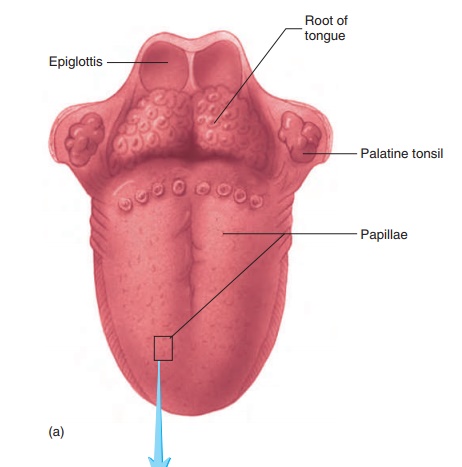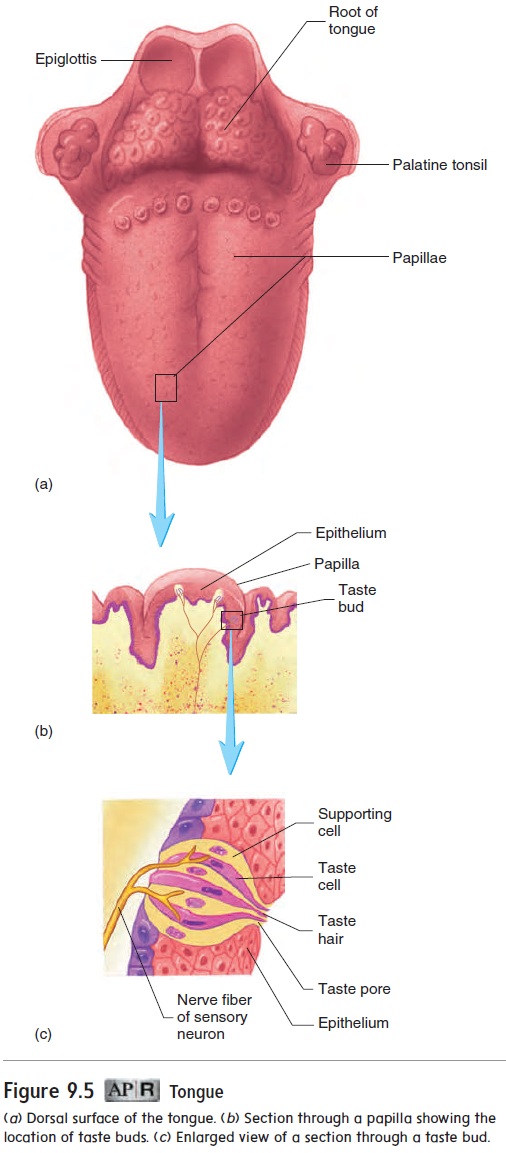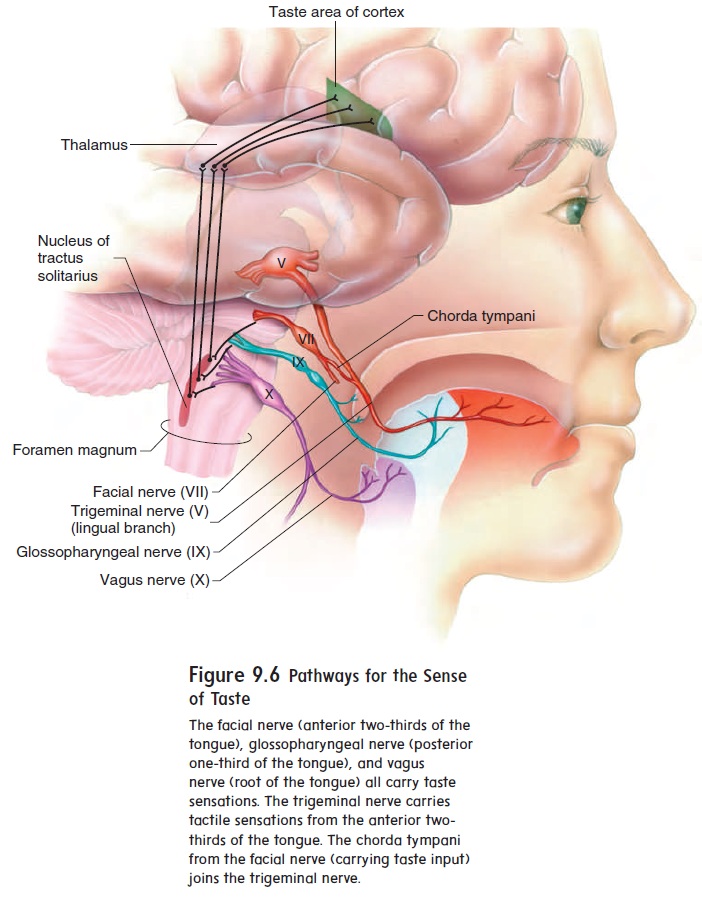Chapter: Essentials of Anatomy and Physiology: Senses
Taste

TASTE
The sensory structures that detect taste stimuli are the taste buds. Taste buds are oval structures located on the surface of certain papillae (p̆a-pil′̄e; nipples), which are enlargements on the surfaceof the tongue (figure 9.5). Taste buds are also distributed through-out other areas of the mouth and pharynx, such as on the palate, the root of the tongue, and the epiglottis. Each taste bud consists of two types of cells. Specialized epithelial cells form the exterior sup-porting capsule of each taste bud, and the interior consists of about 40 taste cells. Each taste cell contains hairlike processes, called taste hairs, that extend into a tiny opening in the surrounding strat-ified epithelium, called a taste pore. Dissolved molecules or ions bind to receptors on the taste hairs and initiate action potentials, which sensory neurons carry to the insula of the cerebral cortex.
Taste sensations are divided into five basic types: sour, salty, bitter, sweet, and umami (̄u -ma′ m̄e ; savory). Although all taste buds are able to detect all five of the basic taste sensations, each taste bud is usually most sensitive to one class of taste stimuli. Presumably, our ability to perceive many different tastes is achieved through various combinations of these five types.

Many taste sensations are strongly influenced by olfactory sen- sations. This influence can be demonstrated by comparing the taste of some food before and after pinching your nose. It is easy to detect that the sense of taste is reduced while the nose is pinched.
Neuronal Pathways for taste
Taste sensations are carried by three cranial nerves. The facial nerve (VII) transmits taste sensations from the anterior two-thirds of the tongue, and the glossopharyngeal nerve (IX) carries taste sensations from the posterior one-third. In addition, the vagus nerve (X) carries some taste sensations from the root of the tongue. Axons from these three cranial nerves synapse in the gustatory (taste) portion of brainstem nuclei. Axons of neurons in these brainstem nuclei synapse in the thalamus, and axons from neurons in the thalamus project to the taste area in the insula of the cerebrum (figure 9.6).

Related Topics